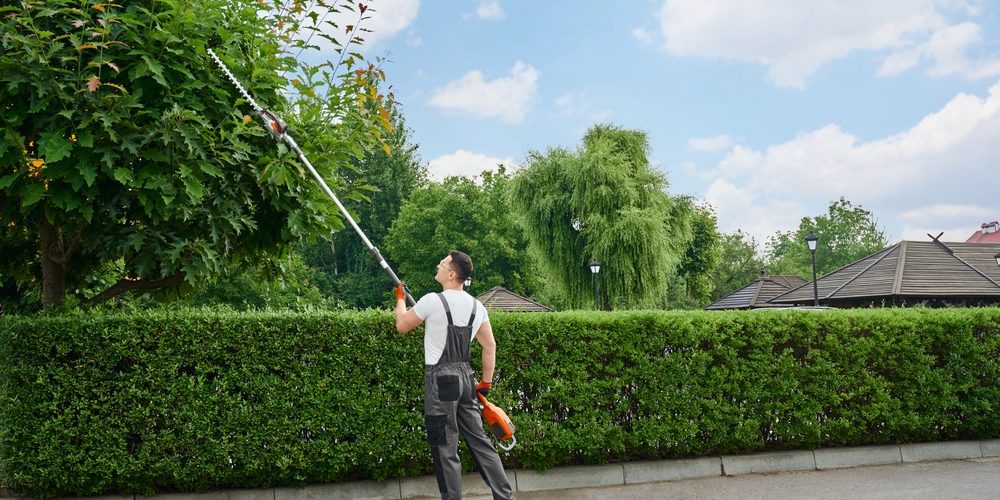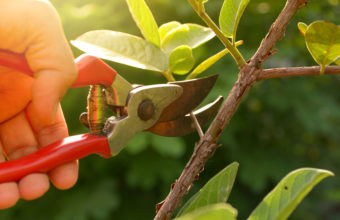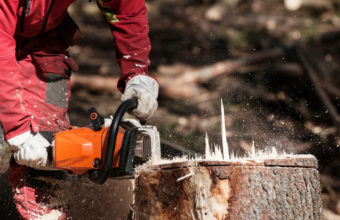Properly trimming or pruning a tree is for maintaining its health, promoting healthy growth, and reducing the risk of damage or disease.
Here are the basic steps to properly trim a tree…
- Identify the Purpose – Determine the reason for trimming: Common reasons include removing dead or diseased branches, shaping the tree, improving structure, increasing light penetration, or addressing safety concerns.
- Gather the Right Tools – Ensure you have the appropriate tools for the job, including pruning shears, loppers, a pruning saw, safety equipment (gloves, safety glasses), and a sturdy ladder if needed.
- Know When to Prune – Prune during the dormant season (late fall to early spring) for most trees to minimize stress and sap loss. Some exceptions include flowering trees, which are best pruned right after they bloom, and dead or damaged branches, which can be removed at any time.
- Locate Branch Collars and Branch Bows – Before making any cuts, identify the branch collar (swollen area at the base of a branch) and the branch bark ridge (raised area where the branch meets the trunk). Make cuts just outside the branch collar without damaging it.
- Follow the Three-Cut Technique (For Larger Branches) – To prevent tearing and damaging the tree: Make an undercut on the bottom of the branch about 12-18 inches from the trunk, cutting upward. Make a second cut from the top, slightly farther out from the first cut to remove the branch, letting it fall without damaging the tree. Make a final cut just outside the branch collar to remove the remaining stub.
- Use the One-Cut Technique (For Smaller Branches) – For branches less than 1 inch in diameter, make one clean cut just outside the branch collar. Ensure a smooth, angled cut to allow water to drain away from the wound.
- Avoid Over pruning – Do not remove more than 25% of the tree’s foliage in a single pruning session to avoid stressing the tree. Over pruning can weaken the tree and lead to growth problems.
- Prune Dead or Diseased Branches – Start by removing dead, diseased, or broken branches. These should be your top priority for pruning.
- Thin Out Excess Growth – To improve air circulation and light penetration, selectively remove some smaller branches or limbs, focusing on crossing or crowded branches.
- Maintain Proper Branch Spacing – Ensure that branches have adequate spacing between them to prevent crowding and rubbing against each other.
- Step Back and Assess – Periodically step back and assess the tree’s shape and balance as you prune. Avoid creating an imbalanced or top-heavy appearance.
- Clean Up – Remove all debris, including branches, leaves, and twigs, from the area around the tree to prevent disease and pests.
- Dispose of Debris Properly – Dispose of pruned branches and debris according to local regulations. Consider composting or recycling whenever possible.
If you are unsure about how to properly trim a tree, especially for larger or more complex jobs, it’s advisable to consult with a certified arborist or tree care professional. They can provide expert guidance and ensure that the tree is pruned correctly to maintain its health and aesthetics.






